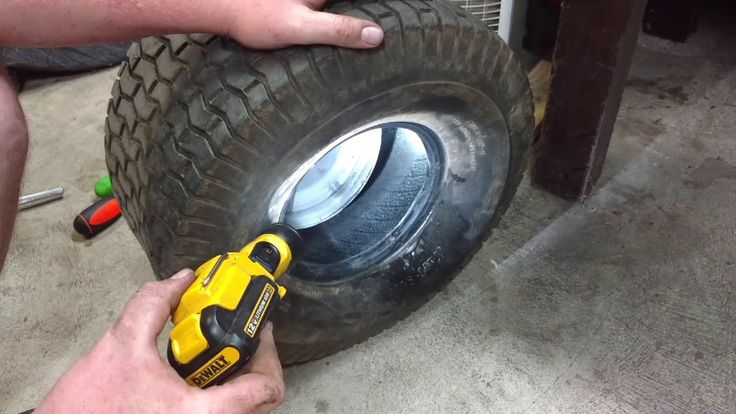Upgrading your lawnmower can work wonders in increasing its efficacy and performance for maximum results. You can put bigger wheels on your lawnmower as long as you take deck clearance into account. Whether it be deck clearance, wheel size, or proper installation, let’s take a look at how you can safely put bigger wheels on your lawnmower.
When it comes to a lawnmower’s performance, most owners focus on the crucial components, such as the blades and the engine. However, your tires can make a considerable difference in your mowing capabilities, so it can sometimes help to adjust them accordingly. One change that might be beneficial is to put larger wheels on your lawnmower.
You can and should put larger wheels on your lawnmower. Larger tires will provide additional clearance, although you may have to make adjustments to the deck and blades. You may have to extend the axle for the new tires to fit. The process for installing larger wheels will depend on the type of mower you have and the size of the wheels. If you can’t do it yourself, consult with your local dealer.
Because there are so many variables that can go into this project, we will outline the different potential options for installing larger tires on your lawnmowers. We’ll also discuss the benefits and downsides that can come from a larger tire.
Do You Need a Mower Repair Service?
Get free, zero-commitment quotes from pro contractors near you.
FIND LOCAL CONTRACTORS
The short answer to this question is yes. However, it depends on a few things. Here is a breakdown of the different variables to consider before moving forward with this project.
When changing the wheels on a mower, you have to consider both the terrain and your machine’s weight.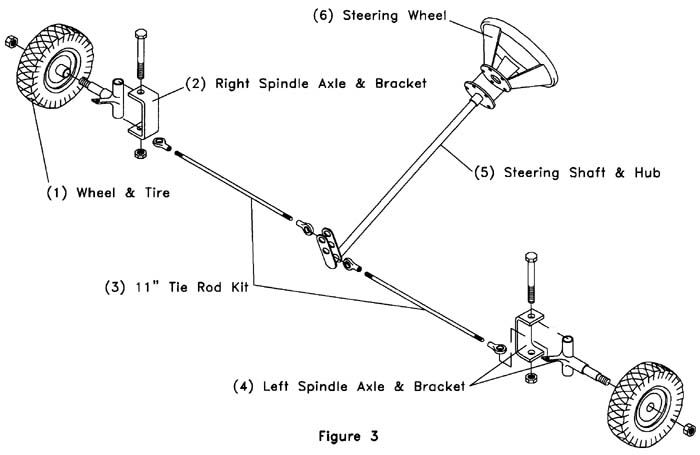 For example, you don’t have to worry as much about the weight of a push mower, but it may be harder to get the new tire to fit. Riding mowers tend to have more wheel options, so it might be easier to buy a larger model than it would be for a push model.
For example, you don’t have to worry as much about the weight of a push mower, but it may be harder to get the new tire to fit. Riding mowers tend to have more wheel options, so it might be easier to buy a larger model than it would be for a push model.
Overall, you have to make sure that the new tires are rated for the type of mower you have since they are not interchangeable.
Larger tires are going to be both taller and wider to accommodate more weight. Usually, this means that you’ll have to extend the axle to accommodate them. However, with push mowers, you may be able to find wheels that are relatively the same width so that you can install them on the same axle.
If you have a riding mower, you have to make sure that the new tires will fit the wheel’s clearance well. If not, you won’t be able to install them. While it might be possible to remove the well, it’s not recommended.
Installing larger tires on your lawnmower means raising its minimum height.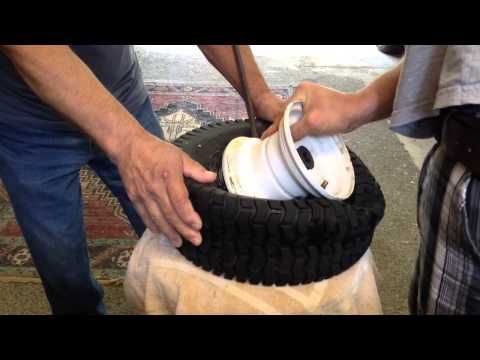 On a push mower, this means that you might not be able to go low enough to cut the grass. On a riding lawnmower, you will have to adjust the cutting deck to compensate for the difference. If you like to keep your lawn thick, this may not pose a problem. However, if you prefer to cut extra-low, larger wheels might prevent you from doing so.
On a push mower, this means that you might not be able to go low enough to cut the grass. On a riding lawnmower, you will have to adjust the cutting deck to compensate for the difference. If you like to keep your lawn thick, this may not pose a problem. However, if you prefer to cut extra-low, larger wheels might prevent you from doing so.
Before starting this project, you need to know the reason behind having larger wheels. Some of the benefits and downsides can include:
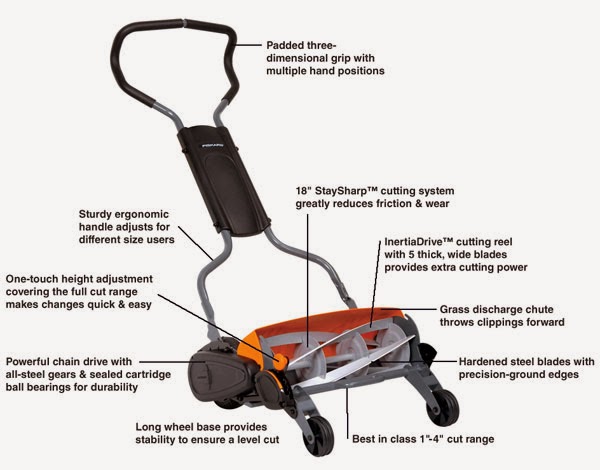
There are a few ways to do this, and the method will depend on the wheel size you choose and whether it fits on the mower as-is. We’ll walk through the various options, starting with the easiest.
Usually, lawnmower tires are tubeless, meaning that they don’t have an inflation valve. So, to replace the tire on your lawnmower, you have to pull it off the rim by breaking the bead. However, if your mower has tubed wheels, you can replace the whole thing, including the rim. Here are the steps for a simple tire swap.
So, to replace the tire on your lawnmower, you have to pull it off the rim by breaking the bead. However, if your mower has tubed wheels, you can replace the whole thing, including the rim. Here are the steps for a simple tire swap.

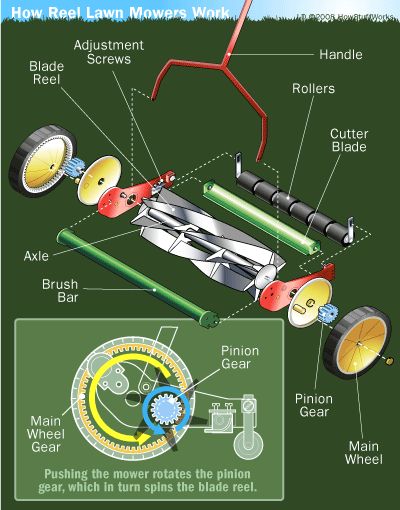
In some cases, the new tire may be too wide to fit on the old axle. This method requires metalworking and welding experience, so we don’t recommend attempting it if you don’t know what you’re doing.
If necessary, ask your local repair shop if they can take care of this for you. However, welding pieces to your axle could void any warranty on the mower, so some shops won’t do it.
Basically, you have to find a bolt that is the same width as the axle. You will have to cut off the head and weld the piece to the end of the axle. Once that’s done, you should be able to attach the tire and place one or two nuts to hold it securely. We recommend installing two nuts that screw in opposite directions to ensure that the tire doesn’t come loose while driving.
Again, don’t attempt this if you have no experience with cutting or welding metal, as it could be too dangerous.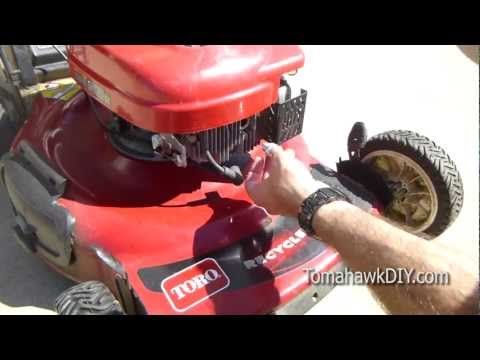
Do You Need a Mower Repair Service?
Get free, zero-commitment quotes from pro contractors near you.
FIND LOCAL CONTRACTORS
In many cases, the rear tires can be larger than the front ones. However, you will have to recalibrate your cutting deck so that you’re not mowing at an angle.
Do You Paint Walls Or Trim First? (Find Out Now!)
A fresh coat of paint is one of the easiest and most affordable ways to drastically change your home's interior. But just because it's simple doesn't mean you can dive right in without a plan. Proper...
But just because it's simple doesn't mean you can dive right in without a plan. Proper...
Continue Reading
link to Roman Shades vs. Roller Shades (Which One is Better?)Roman Shades vs. Roller Shades (Which One is Better?)
When you need to choose new window treatments, you might find yourself overwhelmed by all the options. Some you may have never even seen or heard of before. But once you start to understand your...
Continue Reading
Nothing beats zero turn mowers when it comes to efficiency and speed while tending to a relatively large lawn. However, a lot of owners wonder if they can improve the performance of their mower by upgrading some of its parts, such as the wheels.
The quick answer is yes! However, to make the most out of this upgrade, you have to keep a few variables and aspects in mind, such as; turn radius, maneuverability, deck, etc.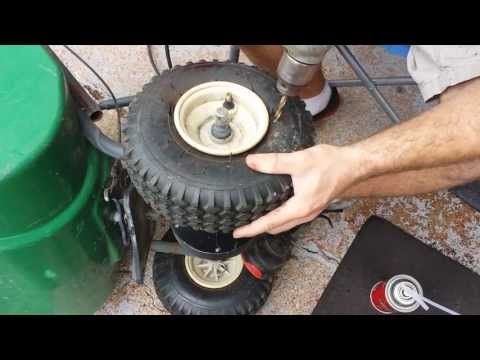
Keep on reading if you want to know these aspects as well as the pros and cons of putting bigger tires on your zero-turn mower!
There’s no universal agreement between lawn mower brands about the size of the zero turn mower tires. However, in most cases, size 15x 6.00-6 is probably the most commonly used one.
The tread pattern design is also similar among lawn mower tires, as most brands use a turf saver pattern, which is specifically designed to minimize the tear while moving over the grass to keep the height consistent.
In order to find out more about lawn mower tires, you should first understand the measurement system they use. For example, if you have a 15×6.00-6 tire, what exactly does that mean?
The first number, which is 15 here, represents the tire’s height when the wheel is properly inflated and not under any load. The larger this number is the larger the tire’s diameter.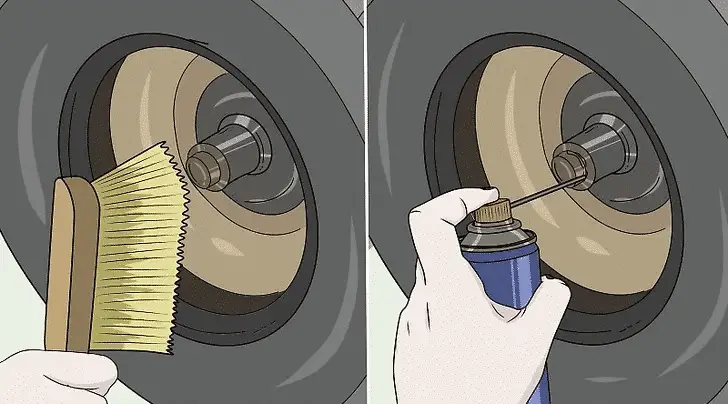
The second number, which is 6.00, represents the horizontal width of the tire. This means that the tread width of the tire in question here is 6 inches.
The final number, which is six after the hyphen (-), represents the size of the metallic rim on which the tires will be fitted. It is measured in inches, and the number should always be smaller than the width of the tires.
As you can see from the previous example, a “larger tire” can indicate a larger tread width of the same length, a larger diameter of the same width, or larger width and height.
In this section, we’ll discuss all these possibilities and whether they’re commonly in zero turn mowers:
Installing tires with larger tread width is relatively common. In that case, the upgraded tires are usually installed on the rear set of wheels but can also be installed on all wheels.
In that case, the overall diameter of the tires should remain equal to the stock wheel. So, for example, if the stock wheel is 15×6.00-6 inches, the rear wheels could be 15×8.00-6 inches without issues.
So, for example, if the stock wheel is 15×6.00-6 inches, the rear wheels could be 15×8.00-6 inches without issues.
Installing larger tires is popular for many zero turn mowers. Since the wheels have a larger diameter, you need to install these tires on all four wheels in order to keep the zero turn mower at a level position for consistency while cutting the grass.
Additionally, you’ll need to modify the mower deck by lowering it so that you can adjust the height of the machine while cutting.
This one is relatively uncommon but can be done if your zero turn mower spins a lot while mowing on slippery grass.
It can also help evenly distribute the mower’s weight when working on relatively soft lawns.
The main advantage of installing a larger tire on your zero turn mower is that it enhances the mower’s traction.
For instance, a zero-turn mower is a perfect machine for cutting dry grass on relatively hard and level terrain. However, if it occasionally rains where you live or your soil is a bit soft, achieving these perfect conditions can be pretty tricky.
However, if it occasionally rains where you live or your soil is a bit soft, achieving these perfect conditions can be pretty tricky.
In that case, increasing the width of the rear wheels of a zero turn mower or using larger ones, in general, can help in improving the traction of the mower on the lawn.
Additionally, using these wheels makes it easier to use the mower over different terrains, like in snowy conditions.
Using larger or wider tires on zero turn mowers comes with several benefits but can also come with several drawbacks.
To help you make the right decision for your case, let’s have a quick look at some of the critical aspects to consider before making this adjustment:
Turn angle stands for the minimum angle needed for turning. Ideally, the lower the turn angle of a mower, the more maneuverable it is.
As the name suggests, low turn angle is one of the significant advantages of zero turn mowers, as they’re capable of making up to 180-degree turns in any position.
By using wider tires, this turn angle will increase, which can be a significant hit to the value of the mower if you specifically bought it for the zero degree turn angle.
The engineering of a zero turn mower is greatly dependent on its height. While this may not be a problem if you only increase the width of the tires, it has a considerable impact on the functionality if you increase the height.
Larger tires result in a relatively higher lawn mower. This means that cutting the grass at a very low level can be impossible without proper adjustment to the mower deck.
As a general rule, you’ll need to lower the mower deck by as many inches as you’ve increased the height.
For example, if the new tires are 3 inches higher than the stock tires, you’ll need to adjust the deck so that it’s 3 inches lower to cancel the difference.
Yet, if you usually cut the grass when it’s relatively high and rarely need to cut it too short, you may get away with the tire upgrade without adjusting the deck.
Ideally, the standard tires used in zero turn mowers are the lowest they can go. This means that you can only install a larger tire, but never a smaller one. For starters, you’re bound by the size of the rims.
Additionally, using smaller tires doesn’t add any real advantage to the zero turn mower like the previously mentioned upgrades, especially since you’ll also need to readjust the deck clearance in order to get the machine to work.
Smaller tires also put a lot of pressure on smaller wheels, which makes the mower slippery, harder to maneuver and tear the lawn noticeably while turning.
In the end, we hope that this guide helps you figure out the right thing when it comes to using a bigger tire on your zero turn mower.
Typically, installing a larger tire will generally improve your maneuvering and traction. This makes it a viable adjustment for those who don’t cut the grass too short and want better traction while operating the machine.
However, even with deck adjustment, the wider tires will come at the cost of a few aspects, mainly the turn angle, so you have to keep that in mind while adjusting your mower’s tire size or width.
Related Articles
Sources
https://www.lawnsite.com/threads/tire-question-want-to-go-bigger.68417/
https://www.yesterdaystractors.com/cgi-bin/viewit.cgi?bd=gardent&th=132383
 Lawn mower parameters - Articles about agricultural technology
Lawn mower parameters - Articles about agricultural technology How to choose a lawn mower? When choosing a lawn mower, you should pay attention:
Mower deck.
The deeper the mower deck, the better. A deep mower deck is more difficult to manufacture, but high sides help create a stronger airflow. The mowed grass falls into the lawn mower's grass collector without loss, without waking up on a freshly cut lawn.
Aluminum deck does not rust and therefore has a longer service life.
Knife.
Wide blade with large blades for stronger airflow. By the way, the knife in the lawn mower should be sharp, then the grass will be cut, not torn off, and remain healthy. It is advisable to sharpen the knife in a service center, since self-sharpening can upset the balance, and at high speeds, vibration will appear that will destroy the bearings.
Mower wheels.
The larger the diameter of the wheels, the easier the mower will move on the lawn.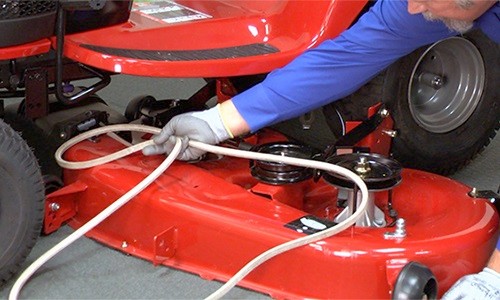 This is especially important in tall grass and if the lawn is uneven. Front wheel drive lawnmower with large rear wheels is easy to maneuver. The wide wheels of the mower do not damage the lawn.
This is especially important in tall grass and if the lawn is uneven. Front wheel drive lawnmower with large rear wheels is easy to maneuver. The wide wheels of the mower do not damage the lawn.
Grass catcher.
Rigid grass catcher in mowers is more convenient! Firstly, it is easier to pour the mowed grass out of it. Secondly, it is more convenient to wash. Thirdly, through the holes in the walls of the grass collector, an air flow freely passes, throwing the grass. Soft bags are only fitted to very powerful petrol lawnmowers, where the higher engine power compensates for the loss in airflow force.
Engine power.
Good mowing results are achieved at high engine speeds. The optimum engine speed is set by the manufacturer. However, when mowing thick, tall or wet grass, engine speed drops significantly. At the same time, the knife tears the grass, the grass does not completely fall into the grass catcher. Power reserve allows you to mow any lawns in any weather. Extra power is needed if the mower is a self-propelled mower, as the movement of the mower also takes power from the engine. If the lawn mower is not self-propelled, then you should not take a very powerful one.
Power reserve allows you to mow any lawns in any weather. Extra power is needed if the mower is a self-propelled mower, as the movement of the mower also takes power from the engine. If the lawn mower is not self-propelled, then you should not take a very powerful one.
Folding handles.
Folding handles allow you to quickly assemble and disassemble the mower. When transporting, it takes up little space. Assembly and bringing to working condition takes a few seconds and does not require tools.
Wheels on bearings.
Bearings for high reliability, durability and smoother running. Wheels with bearings are more impact resistant than wheels with plastic bushings.
Mowing height adjustment.
There are three types of cutting height settings. The simplest and cheapest, in which there are several holes on the deck at different heights. You change the cutting height by rearranging the wheel axles in the desired holes. The second type - each wheel has a lever with which you change the cutting height on each wheel individually. The third type, the most convenient, is the central height adjustment. You change the cutting height with one lever or one button. To lawn was healthy and looked beautiful, it is recommended to mow no more than 1/3 of the grass height at a time. If you often have to change the cutting height, it makes sense to purchase a mower with the second or third type of adjustment.
The second type - each wheel has a lever with which you change the cutting height on each wheel individually. The third type, the most convenient, is the central height adjustment. You change the cutting height with one lever or one button. To lawn was healthy and looked beautiful, it is recommended to mow no more than 1/3 of the grass height at a time. If you often have to change the cutting height, it makes sense to purchase a mower with the second or third type of adjustment.
Features of MTD mowers.
The Self Starter makes starting the engine as simple and convenient as possible. All you have to do is press a button and the pre-compressed spring spins the flywheel and starts the engine. When the engine is stopped, the spring is automatically charged and ready for the next start. Many MTD mowers can cut grass in three ways: side or rear ejection, mulching, and grass catcher. Some models of petrol lawn mowers come with attachments that allow all three bevel type : you will see the logo 3-in-1 on them. If you buy others, some mowing methods will become possible with the purchase of additional accessories.
If you buy others, some mowing methods will become possible with the purchase of additional accessories.
Most MTD self-propelled mowers are equipped with a special ground speed controller that allows you to change the speed from 4 to 7 km/h.
The MTD lawn mowers also have a large emergency shutdown bracket that can be held with two hands, which is very convenient.
Sincerely yours, Agro Trading online store of gardening equipment
All tips TVs, video Large kitchen appliances Phones Small household appliances automotive electronics Computers and office equipment Home Appliances beauty and health Photo and video cameras garden equipment Games and consoles Audio
If you have a garden plot, sooner or later you will definitely need a device that will help you mow the grass and weeds and tidy up the lawn or lawn.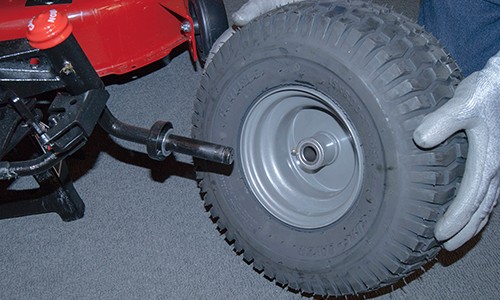 What to buy - a trimmer, a lawn mower, or both? And what characteristics should you pay attention to before buying?
What to buy - a trimmer, a lawn mower, or both? And what characteristics should you pay attention to before buying?
For the perfect lawn and maintenance of large areas
A lawn mower is a wheeled device that cuts grass with blades. There are models to be push in front of you like carts, but there are also more complex devices that need to be controlled from above - sort of mini-harvesters for vast lawns. The advantages of a lawn mower are that, firstly, it processes a large area of the site in a relatively short time, and, secondly, it cuts very evenly and allows you to adjust grass height.
Size. On sale you will find both lightweight units of a relatively small size, and bulky devices that you will need a separate room to store.
Engine type: petrol (diesel) or electric. The latter option is more environmentally friendly, but be aware that you will either have to run a cable across the site, or purchase a device that runs on batteries. In this case, pay attention to its full charge time and operating time. If the lawnmower works from a cable, it is important that there are no problems with the mains voltage and its sharp jumps in your area, otherwise the device may be damaged. But electric mowers make much less noise, and you you can enjoy mowing the lawn even in the early morning, while your neighbors and household are sleeping.
Also found on sale and mechanical lawn mowers . They are practically silent, economical and environmentally friendly, but are only suitable for for those lawns that are constantly maintained in order - on old, weedy areas such mowers will not work.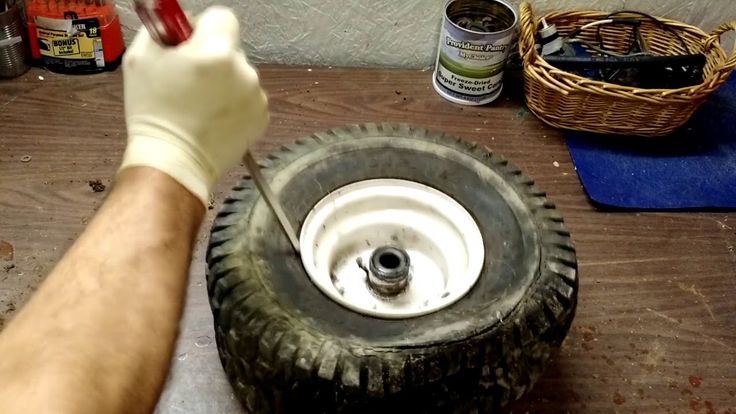 In addition, you need to get used to them in order to understand at what speed the grass is cut best.
In addition, you need to get used to them in order to understand at what speed the grass is cut best.
In turn, gasoline lawn mowers are divided into household, semi-professional and professional - on is the number of horsepower in the engine. The larger the plot you have and the more varied the care for it (say, in addition to mowing the lawn, you need to remove young growth, mulch grass and branches, etc.), all the more powerful and reliable you need a unit.
Electric lawnmowers are divided into drum and rotary . The former have two wheels, they are lighter and easier to care for. Suitable for relatively small areas where there are no forbs and weeds. Rotary have 4 wheels, they are more powerful and heavier, have more features and functionality. Suitable for large areas with a lot of different overgrowth.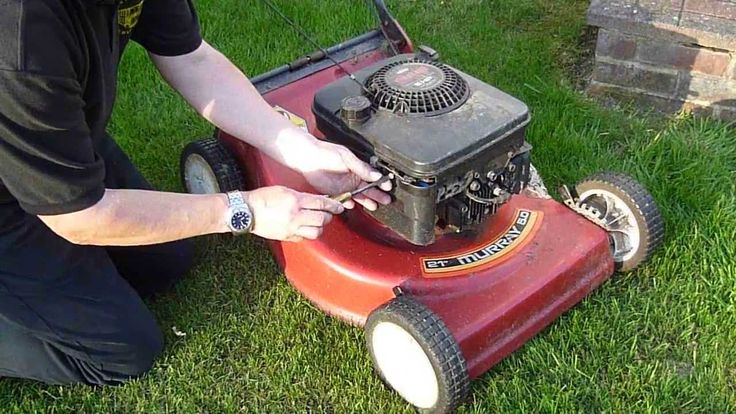
Type of cutting elements. Some models have steel blades moving in a horizontal plane, others - rotate vertically, which guarantees a better cut. However, both types mowers will provide you with a lawn that is even and uniform in height.
Grass catcher. Not all models of lawn mowers are equipped with this element, but if it is important to you, so that the mowed grass does not remain on the site, pay attention to this element. There are grass collectors fabric, plastic and combined. Fabric fills well, but they are difficult to wash, plastic - vice versa. However, most mowers still throw grass - backwards or sideways.
Drive. Petrol mowers can be self-propelled, i.e. rear or front wheel drive. Front-wheel drive mowers are more manoeuvrable, but as the grassbag fills up, the center of gravity will move backward and the front wheels will begin to slip.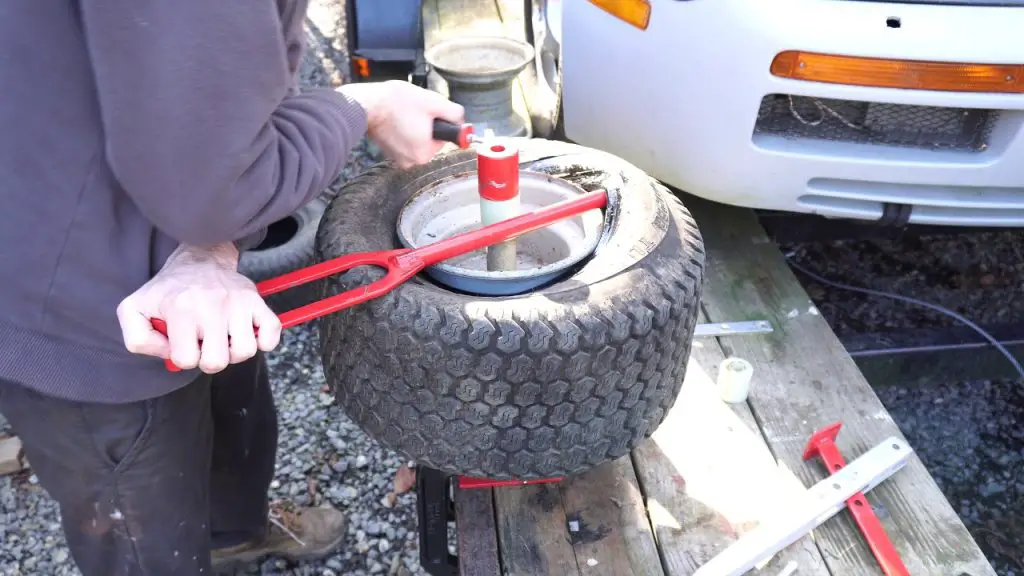 Rear-wheel drive mowers are more comfortable to work, since the main load falls just on the rear axle. However, if you have an uneven area with many obstacles that need to be avoided, you can purchase a mower without a drive, since when maneuvering it is all turns off anyway.
Rear-wheel drive mowers are more comfortable to work, since the main load falls just on the rear axle. However, if you have an uneven area with many obstacles that need to be avoided, you can purchase a mower without a drive, since when maneuvering it is all turns off anyway.
Wheel diameter. The bigger it is. the easier it is to operate the mower. Also pay attention to the presence of bearings in the wheels - this will extend their service life and make the ride smoother.
Cutting width. The larger the plot, the wider the strip of grass to be cut.
Speed control. Relevant for self-propelled lawn mowers.
For small gardens and hard to reach places
The trimmer is a compact, low-power, lightweight device that helps with cutting grass in hard-to-reach places: in narrow areas of the lawn, around trees, along fences, etc.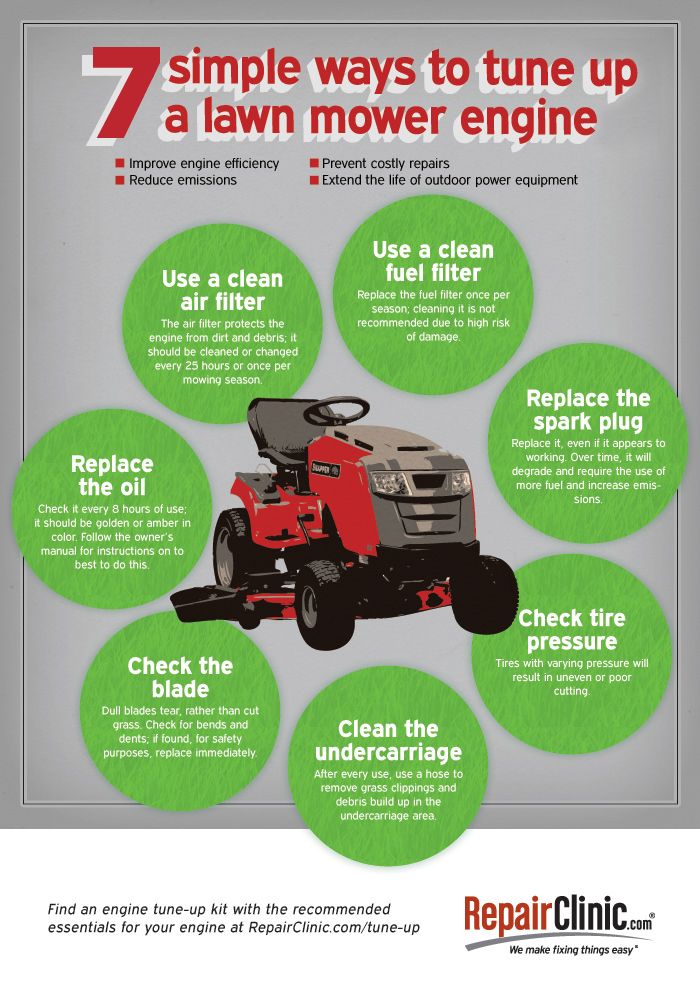 The trimmer is not intended for cutting lawn, as it does not guarantee the same grass height. But it is much more economical, because consumes less electricity or gasoline due to less power, runs quieter, and is easier to store. And the price of trimmers is on average lower than that of lawn mowers. However, it is not suitable for long-term work, so How can it overheat.
The trimmer is not intended for cutting lawn, as it does not guarantee the same grass height. But it is much more economical, because consumes less electricity or gasoline due to less power, runs quieter, and is easier to store. And the price of trimmers is on average lower than that of lawn mowers. However, it is not suitable for long-term work, so How can it overheat.
Engine type. Also available in electric or petrol. Electric trimmers work from the network and are practically silent, but less maneuverable due to the fact that a cable (which is still it is important not to cut while working!). Suitable for small areas. Gasoline models run on engine internal combustion. They are heavier than electric ones, make much more noise, require additional costs. for fuel, but more maneuverable.
for fuel, but more maneuverable.
Among the electric trimmers, models that work from battery . They are certainly convenient, as they work silently and do not depend on the cable. However, such a trimmer is enough for 30-45 minutes of work without recharging, so it is useful only for those areas where you need to quickly mow a small amount of grass. And they cost on average more than food from the network.
Cutting system. The trimmer uses either metal or plastic blades or a special nylon line (cord). The knives are suitable for working in open areas with even terrain and mowing thick herbs with hard stems. The line shows itself better on bumpy terrain and when working next to fences, since, unlike knives, she is not afraid of hitting obstacles and the ground. Another thing is that in dense vegetation, the fishing line can get tangled, so also pay attention to its diameter: if for grass usually 1.4-2 mm is enough, then to cope with thin young shrubs, you need a strong fishing line diameter from 3 mm. At the same time, it is theoretically possible to change one type of fishing line to another, but it is better to avoid this, since the engine is “sharpened” to work with a fishing line of a specific diameter.
Another thing is that in dense vegetation, the fishing line can get tangled, so also pay attention to its diameter: if for grass usually 1.4-2 mm is enough, then to cope with thin young shrubs, you need a strong fishing line diameter from 3 mm. At the same time, it is theoretically possible to change one type of fishing line to another, but it is better to avoid this, since the engine is “sharpened” to work with a fishing line of a specific diameter.
Power. For garden plots, devices with a power of 0.25-0.7 kW are sufficient. More powerful trimmers usually purchased by utilities, which have to mow a large amount of grass.
Cutting width. It is affected by the diameter of the knife and the possibility of maximum extension of the fishing line (it is limited cover size).